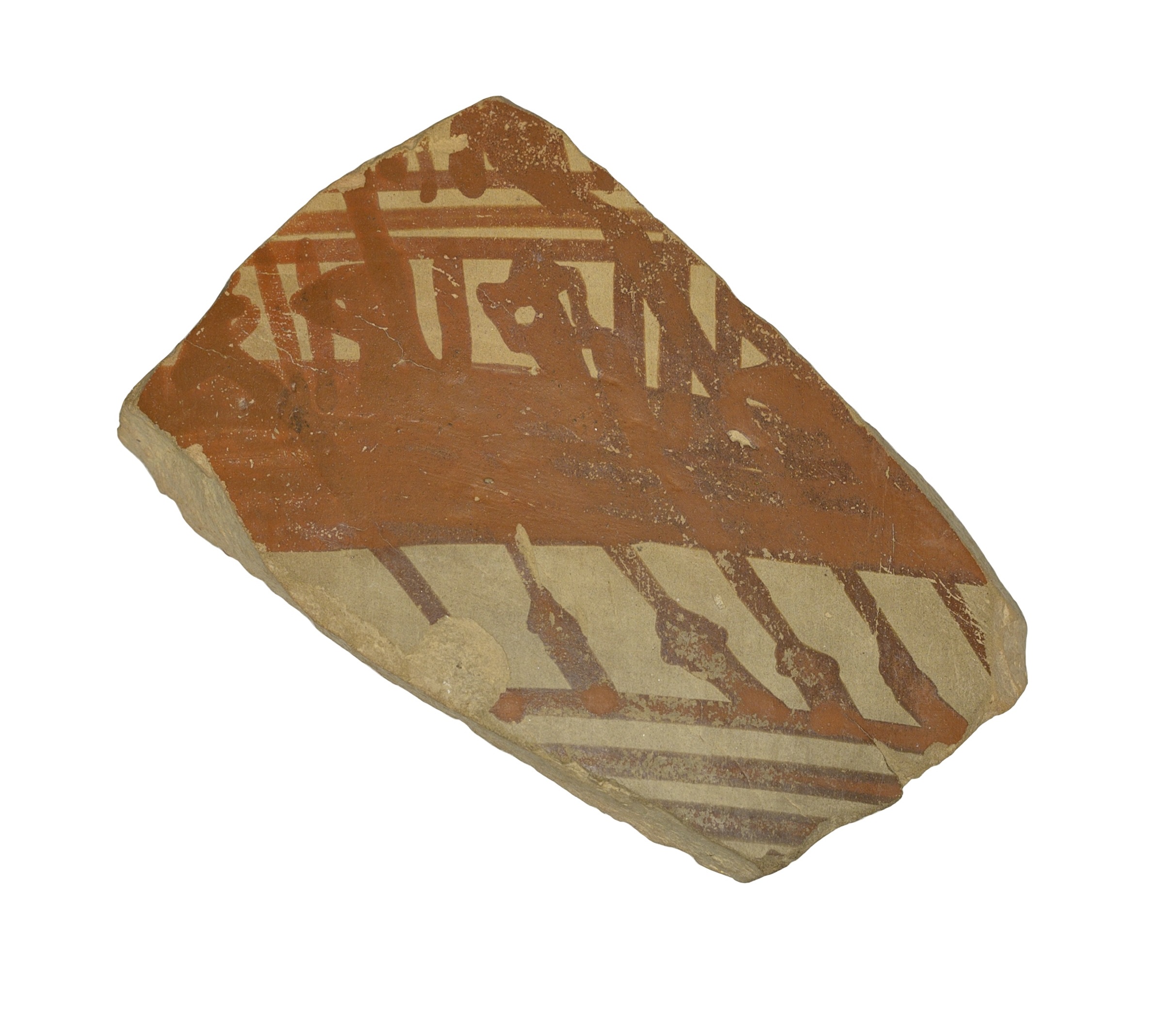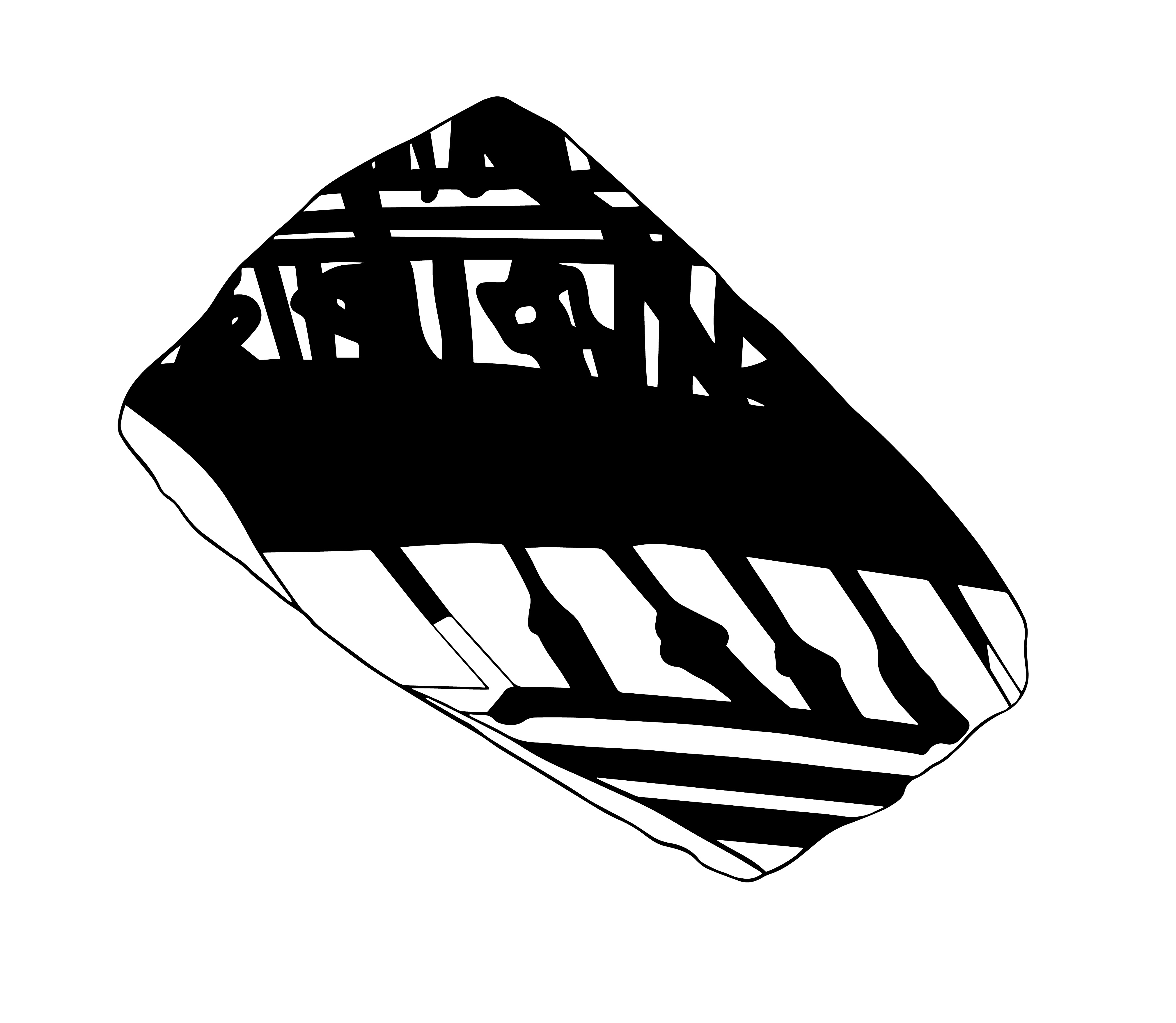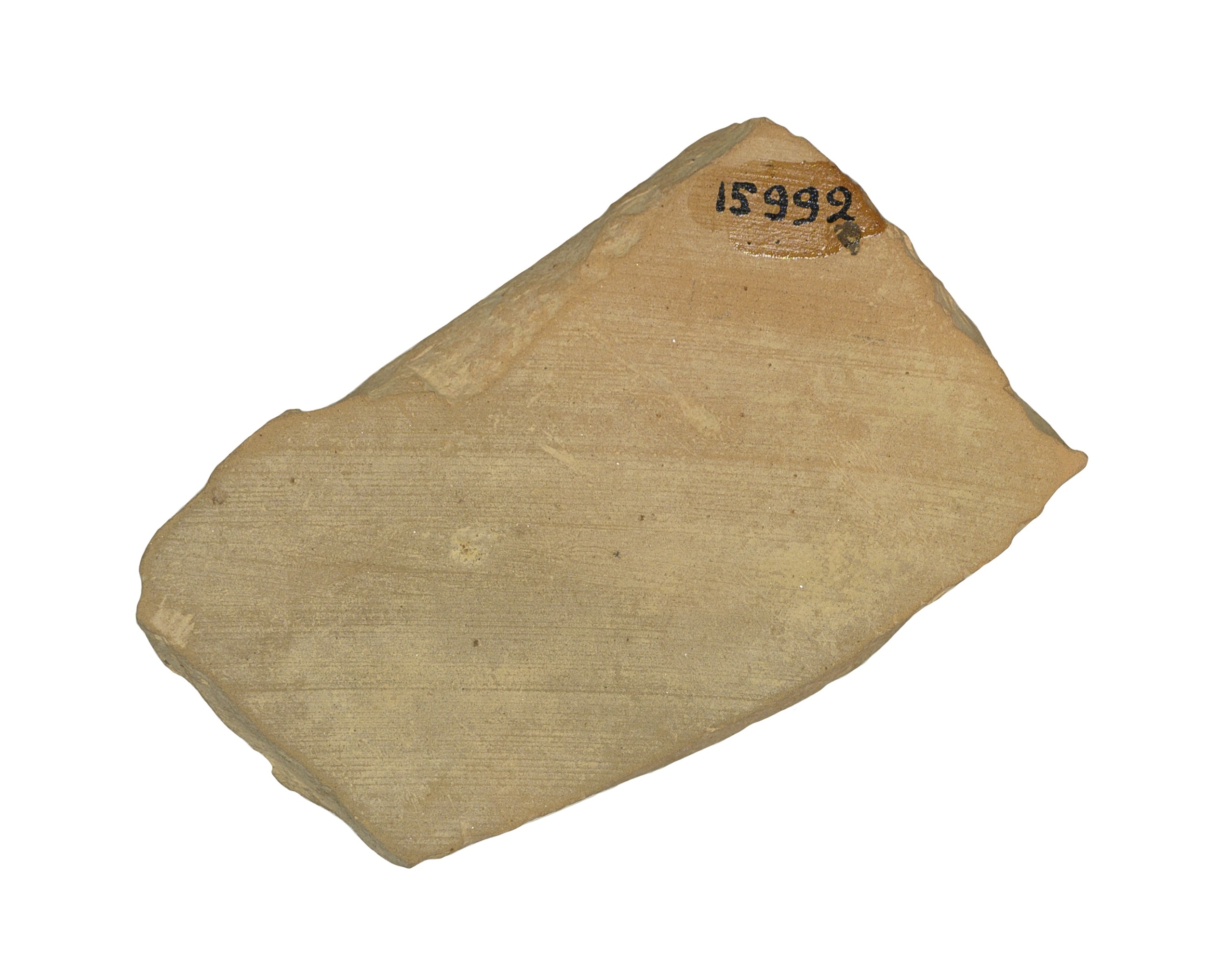Midships section of a double-levelled ship to the left. Above the thick line is a reserved space representing an open rower's galley, with each square port framed by pairs of wide stanchions. Above it are three horizontal lines which form the superstructure (open bulwark) that supports the second level. The lower level rowers face right, with only their torsos and arms visible, while their head is hidden by the bulwark above. There are two fully preserved rowers on the lower level, with their torsos slightly inclined backwards. Oars 3 and 5 belong to the upper level.
Double-levelled galley
A163
Proto-Attic (shortly after 700 B.C.)
Phaleron, Athens
Attic
Athens National Museum 15992
Basch 1987: 183, no. 386; Morrison-Williams 1968: 73, Arch. 1, pl. 8a; Wachsmann 1998: 133, fig. 7.12; Williams 1959: 160. Fig. 1
This representation is similar to the previous two, except for the fact that the artist has painted the upper level oars as crossing the side of the ship between the oars of the lower level instead of interrupting them to resume below the hull. This has been attributed to changes related to the Proto-Attic style, where the artist was no longer so averse to overlapping forms. Basch's suggestion that the artist purposefully applied paint at varying levels of opacity so that the upper level oars would be clearly visible is unconvincing however. There are many other earlier depictions in the Dipylon style where it is possible to trace the order in which various features were painted over each other. The most intuitive explanation is that the artist simply painted the oars as a continuous line over other features of the ship such as the hull which were already painted. This is confirmed by another feature, namely the double vertical stanchions, where the lines of pain extend into the hull and can be traced by their greater opacity. This depiction is important as it confirms and provides undeniable proof that the previous two sherds are dieres.
Basch, L. 1987. Le musée imaginaire de la marine antique. Athens: Institut Hellénique pour la preservation de la tradition nautique.
Morrison, J.S. and R.T. Williams. 1968. Greek Oared Ships: 900-322 B.C. Cambridge: Cambridge University Press.
Wachsmann, S. 1998. Seagoing Ships & Seamanship in the Bronze Age Levant. College Station, TX: Texas A&M University Press.
Williams, R. T. 1959. “Addenda to ‘Early Greek ships of two levels,” JHS 79: 159-160.






